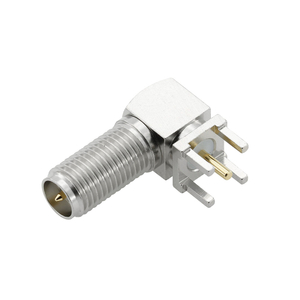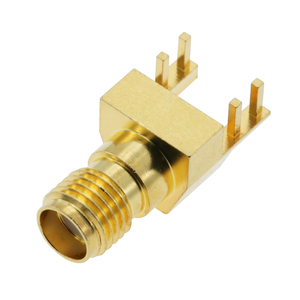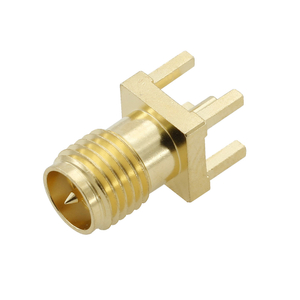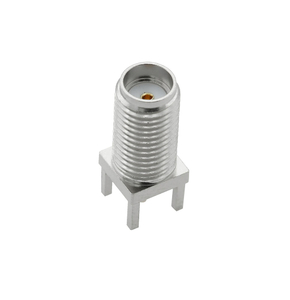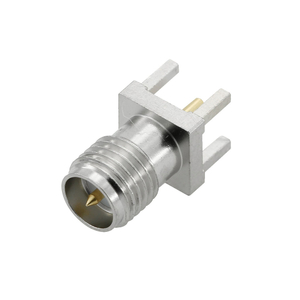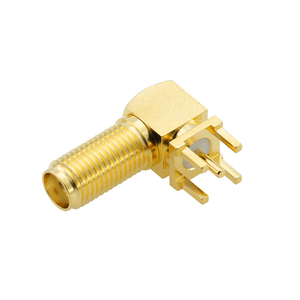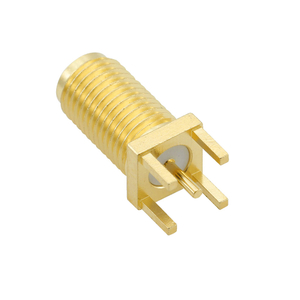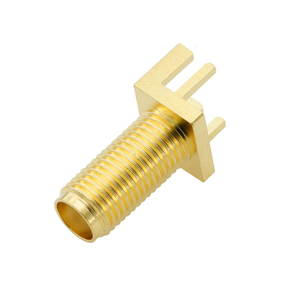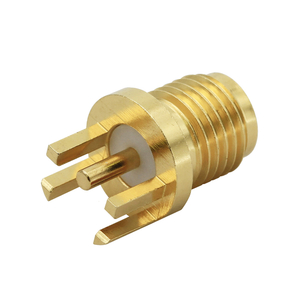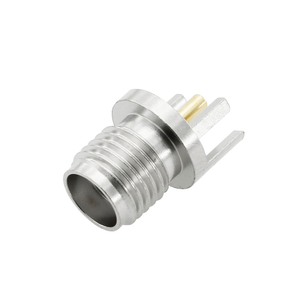Section 1: What is an RF Connector?

An RF connector (Radio Frequency Connector) is an electrical connector used for transmitting RF signals. RF connectors are primarily used to connect RF coaxial cables and are widely used in various communication and electronic devices, such as wireless communication, broadcast television, radar, navigation, and measurement equipment. The design of RF connectors aims to provide reliable electrical connections and minimal signal loss at high frequencies.
RF connectors are passive electronic components designed to achieve specific electrical performance through structural design. The machining and assembly precision of the parts determine the electrical performance, such as insertion loss and return loss. Plating and materials determine the connector's lifespan and weather resistance.
Definition of Grade
The grade of a connector is defined by its level of mechanical and electrical precision, particularly regarding the specified reflection coefficient.
According to the standards of GB/T 11313.1-2013 (Chinese National Standard) / IEC 61169-1:1998 (International Electrotechnical Commission), RF connectors are classified into three grades:
General Purpose Connector (Grade 2):
Manufactured with the widest allowable dimensional tolerances but still ensures minimal specified performance and compatibility.
The requirement for the reflection coefficient may or may not be specified.
High Performance Connector (Grade 1):
A connector with specified limits on the reflection coefficient depending on the frequency.
Typically, the dimensional tolerances are not stricter than those for Grade 2 connectors, but the manufacturer must choose tighter tolerances to meet the reflection coefficient requirements.
Standard Test Connector (Grade 0):
A precisely manufactured connector type used to measure the reflection coefficient of Grade 1 and Grade 2 connectors, with measurement errors being negligible.
Note: Standard test connectors are usually part of adapters between different types, which, together with precision connectors, form part of the test equipment.
Section 2: Cost Analysis for RF Connector Sample Manufacturing
Depending on the product grade and customer requirements, sample prices may vary but generally not by much.
1. Material Cost
Different materials determine the processing cost of samples. For instance:
Stainless steel is cheaper than brass but has higher processing costs.
Beryllium copper is expensive, and its processing cost is also high.
Using materials like PEEK and PEI as insulators is much more expensive than PTFE.
Material cost is a small proportion of the total cost, but some samples have minimum order quantities for materials.
2. Design Cost
RF connectors vary in design and requirements, ranging from 3 to 20 subcomponents. Connector engineers usually perform software (HFSS) simulations to achieve optimal performance and then use AUTOCAD for drawing parts, taking 4-12 hours or 1-2 working days. At a daily salary of 70USD, the complete set of drawings for one connector costs at least 45-70USD.
3. Parts Manufacturing Cost
Clients often mistakenly believe that CNC machining is straightforward and simple, just input the 2D drawing and CNC will running automatically,actually producing a part requires continuous adjustments. Two types of CNC machines are commonly used in RF connector manufacturing:


6-Axial CNC machine: Costs around 70K USD, typically processing high-precision brass parts, stainless steel parts, and beryllium copper inner conductors with a precision of 0.005~0.01mm.
Adjusting a part on a 3-Axial CNC machine takes 2-4 hours, while on a 6-Axial machine it takes 8-12 hours. The daily salary of a machine engineer is 70 USD, and the depreciation cost of a 6-Axial machine is at least 250 per day, so manufacturing a high-precision part costs 100 USD.
The cost of manufacturing a standard precision part on a turret machine is 40-55 USD by 3-Axial CNC machine.

For a high-precision, high-frequency RF connector (Grade 0 SMP connector ) comprising a shell, insulator, and inner conductor:
For a standard precision(Grade 1 SMA connector), low-frequency RF connector:
Note: Beryllium copper contacts and inner conductors require temper treatment, costing 15~30 USD.
4. Plating Cost
Plating provides corrosion resistance, aesthetic appeal, improved electrical performance, increased hardness, and wear resistance. The plating cost for samples ranges from 30~50 USD, depending on the type.
5. Assembly Cost
Samples are usually assembled by design engineers or product engineers, taking several hours. Some connectors require custom fixture, increasing the total cost.
6. Testing Cost
Even with few samples, complete inspection processes are necessary, including full-size inspection reports, mechanical strength tests, insertion and extraction force tests, insertion loss, return loss, electrical performance tests, voltage withstand tests, short circuit tests, and insulation resistance tests etc.
7. Overhead
Since samples are produced in small quantities, the management and manufacturing labor costs are proportionally higher.
If a sample does not meet the requirements after the above processes, the drawings need to be modified, parts reprocessed, plated, assembled, and tested, significantly increasing the cost.
Conclusion

From a manufacturing perspective, the fixed cost of producing 30PCS and 3K PCS is the same. Factories prefer producing larger quantities of a single type. Therefore, the minimum order quantity (MOQ) is usually 500 PCS. Most sample prices are always deficit, intended to secure future orders. Providing samples is a better service attitude since orders cannot be obtained without samples.
















